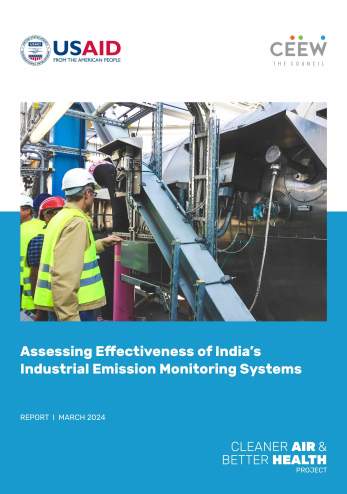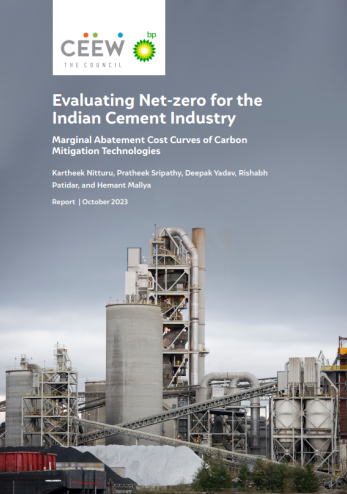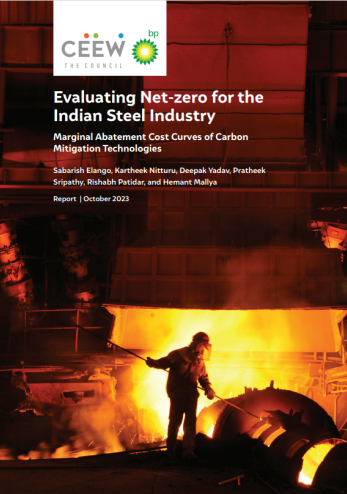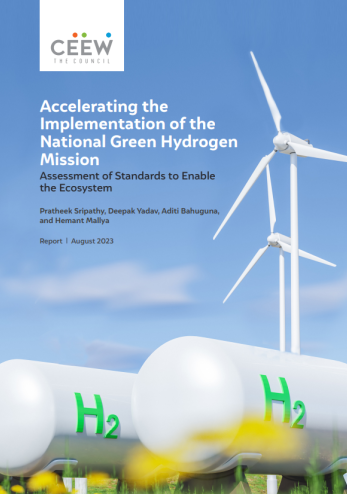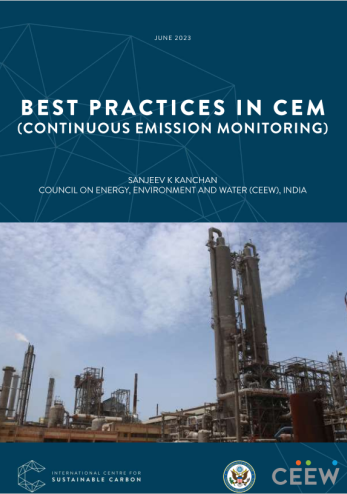Report
Impact Evaluation of Climate Change Mitigation Policies for the Manufacturing Sector in Gujarat
Shanal Pradhan, Deepa Janakiraman
September 2020 | Industrial Sustainability
Suggested citation: Pradhan, Shanal, and Deepa Janakiraman. 2020. Impact Evaluation of Climate Change Mitigation Policies for the Manufacturing Sector in Gujarat. New Delhi: Council on Energy, Environment and Water.
Overview
This study, part of The Council’s ongoing work under GHG Platform India and supported by the Shakti Sustainable Energy Foundation, assesses eight policies and mitigation actions undertaken in the Indian state of Gujarat’s manufacturing sector. Gujarat has implemented numerous policies on its manufacturing sector with little or no significant impact on greenhouse gas (GHG) mitigation. The study aims to sensitise stakeholders across government, industry, academia, and civil society groups, about the impact of policies and mitigation actions on reducing GHG emission intensity in the manufacturing sector. Further, it recommends the state government on whether ongoing mitigation efforts need to be continued, adjusted, or expanded, or if additional policy measures need to be implemented.
Emission trends of industries in Gujarat increased from 24 to 69 MtCO2e in 2005–2015
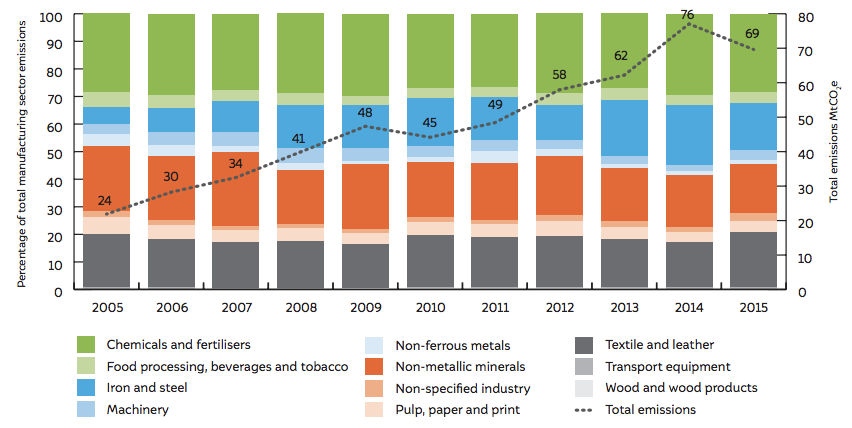
Source: Author's analysis
Key highlights
- During the period 2005 to 2015, the manufacturing sector emissions grew with a CAGR of 11 per cent. At the sub-sectoral level, four sectors – chemicals and fertilisers, iron and steel, non-metallic minerals, and textile and leather together contributed around 84 per cent of the share of emissions during 2015.
- The study indicates a total emission reduction of about 13.5 MtCO2e as a result of three policies and mitigation actions (11.16 from CDM, 2.28 from PAT 1, and 0.02 from RTS). The 22 registered projects evaluated for CDM specifically relate to energy efficiency and fuel switch activities.
- Despite the increase in the intensity of emissions from industries in 2005–2011, mitigation actions have effectively reduced the energy intensity of the sector during the latter half (2011-2015).
Intensity trends compared between 2007–2011 and 2011–2015 shows improvement in emission and energy intensity in the second period(2011-2015), implying the impact of major policies during this period, whereas carbon intensity of the energy mix shows an increasing trend
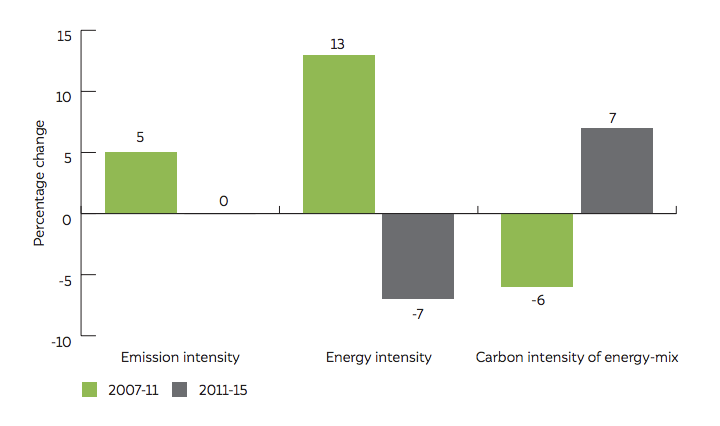
Source: Author's analysis
- Coal remained the dominant source of energy (43 percent share in total energy use); while showing marginal uptake of natural gas especially in the energy-intensive industries.
- A three-year moving average trend of energy intensity for the manufacturing sector indicates an increase by 13 per cent in 2007–2011. It subsequently decreased by 7 per cent in 2011–2015.
- Consumption of natural gas has increased over the years, but primarily in the chemical and fertiliser industries as feedstock. The lack of sustained supply of cheap domestic gas has been a serious bottleneck in expanding gas-based production capacities, especially in energy-intensive sectors like iron and steel.
Key recommendations
- Incentivise a transition to low-carbon energy sources to unlock greater emission reduction potential alongside reduced air pollution.
- Levy a lower tax or rebate on natural gas and increase the tax on polluting fuels in order to ensure no additional burden on the state exchequer.
- Design an effective market-based programme to eliminate known bottlenecks like target setting to incentivise continual improvement and the high transaction costs associated with project validation and M&V.
- Extend the emission trading scheme currently piloted at Surat for particulate matter to include GHG emissions which is vital for mitigation.
Coal remains the mainstay of the manufacturing sector in Gujarat with a 43 per cent share in total energy use. Its substitution with low-carbon fuels is of utmost priority.




